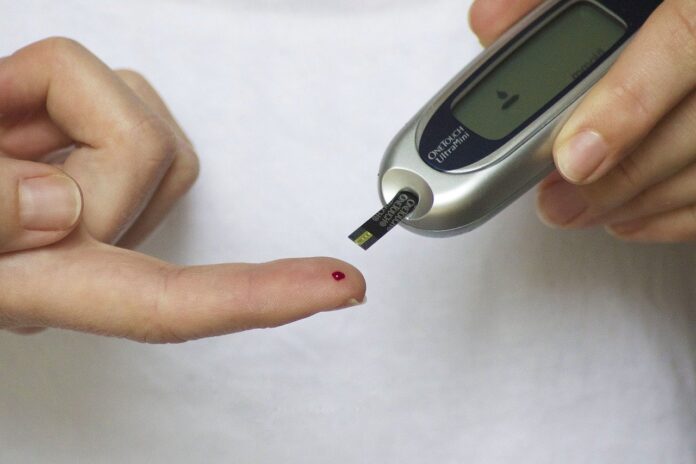Table of Contents
Discover the difference between type 1 and type 2, symptoms, risk factors, treatments and how to manage the pathology through nutrition and physical activity
The term diabetes derives from the Greek “diabaino”, that is to pass through. This is because the ancients, observing diabetic people, noticed that they drank a lot, peed a lot and lost weight: in their eyes, therefore, food and water passed through the body. There are two types of diabetes: type 1 diabetes (called juvenile or insulin-dependent diabetes) and type 2 diabetes. Both are chronic conditions.
√ Definition
Type 1 diabetes
It is an autoimmune disease that usually occurs at a young age and has insulin as the only treatment. It generally develops during the adolescent years, but can also appear in very young children (even infants) or young adults. It represents about 10% of diabetes cases. In type I diabetes patients, the immune system no longer recognizes the insulin-producing cells of the pancreas and triggers a response that destroys them. The body thus stops producing insulin, a hormone essential for survival because it allows you to burn glucose. In fact, to enter cells, glucose needs insulin: in its absence it is not burned to produce energy and remains in the blood, raising blood sugar (hyperglycaemia) and causing damage to various organs.
Type 2 diabetes
It is the most common form because it affects about 90% of diabetes cases. According to the latest data, there are about 4 million Italians with diabetes and in 2030 there will be, according to estimates, over 5 million. Unlike type 1 diabetes, which has autoimmune origin and follows the rapid destruction of insulin-producing pancreas cells, type 2 diabetes develops over the years, passing through an insulin resistance phase (less effective insulin) and leading to a relative deficit of insulin production. Multiple genetic alterations and acquired factors are responsible for it (sedentary lifestyle, smoking, poor nutrition, overweight). About 40% of type 2 diabetics have first degree relatives (parents, siblings) affected by the same disease, while in monozygotic twins the concordance approaches 100%, suggesting a strong hereditary component.
spread
Incidence
Differences in men and women
Guidelines 2018
Diabetes are five in all Are there other types of diabetes?
According to research conducted in Sweden and Finland in March 2018 and published in The Lancet Diabetes & Endocrinology, there are five types of diabetes in all. This study pushes towards an increasingly personalized treatment of the pathology. Go to the article.
Leda diabetes
A similar opinion is also supported by a 2017 research, published in the BMC Journal, which talks about a type of diabetes placed “halfway” between the two best known forms. Defined as latent autoimmune diabetes in adults (LADA), it is a sort of hybrid that has nuanced symptoms of one and the other: like juvenile type 1 diabetes is characterized by autoantibodies circulating in the blood directed against the beta cells of the insulin-producing pancreas; like type 2 diabetes, however, patients after diagnosis do not always need to resort to insulin. Go to the article.
√ Causes and risk factors
Type 1 diabetes and type 2 diabetes are two completely different pathologies from the etiological and pathogenetic point of view.
Type 1 diabetes
The causes are still unknown. There are people genetically predisposed to autoimmunity and who, due to a triggering event, develop diabetes. Various possibilities are being studied, such as genetics, viruses, infections, inflammation in the intestine or early weaning from breastfeeding. However, there is still no certainty. Here are some of the most recent studies:
Inflammation of the intestine
Bacteria present in the intestine
Genetic inheritance
Virus in the pancreas
Among the risk factors of type 1 diabetes: first degree relatives (therefore parents, siblings) with the pathology, autoimmune diseases (e.g. thyroiditis, rheumatoid arthritis, celiac disease, vitiligo) and autoimmune diseases among first degree relatives.
Type 2 diabetes
Type 2 diabetes can more easily develop in the presence of certain risk factors: familiarity, being overweight, obesity, initial changes in blood sugar and, in women, the presence of diabetes in pregnancy. Clearly, the simultaneous presence of multiple factors increases the probability of getting sick. The children of those affected, therefore, especially if they are both parents, are more exposed to risk, because they can inherit some variants of genes that favor their appearance, but it does not mean that it always and inevitably happens. On the contrary, you can get sick even if you don’t have diabetes in your family, although in the case of type 2 diabetes the risk is lower.
Risk factors for type 2 diabetes: fitness and lifestyle
Overweight and above all obesity: in children and adults
sedentary
Cigarette smoke
Too much work and bullying at work
Go home late
Eat late in the evening or have iron-rich night snacks
Risk factors for type 2 diabetes: nutrition
salt
Sweeteners
Light drinks and carbonated drinks
alcohol
Palm oil
Junk food
Red meat
Gluten-free diet without being celiac
Risk factors for type 2 diabetes: pathologies
Obstructive sleep apnea
Hypertension
Polycystic ovary
Early menopause
Taking statins for cholesterol
Helicobacter pylori
Previous gestational diabetes
Type 2 diabetes risk factors: external environmental factors
Exposure to pesticides and phthalates
Climate change and pollution
√ Prevention
Type 1 diabetes
Although much research has been conducted, there is currently no evidence that type 1 diabetes can be prevented with a particular lifestyle or with medications. However, it is possible to prevent, postpone the onset or reduce the severity of complications, keeping blood glucose values as stable as possible over time. For this to happen, it is important that the type 1 diabetic patient is aware of his condition and is able to manage it in daily life following a lifestyle that is as healthy as possible.
The TrialNet study
The international TrialNet study is underway at the Diabetes Research Institute – DRI of the IRCCS San Raffaele Hospital in Milan. The research team identifies subjects at risk of type 1 diabetes to try to understand the causes and risk factors of the disease and, one day, to be able to prevent it. Go to the article with the video interview with the expert.
The role of breast milk
Finnish research from 2017, published in the journal Diabetologia, has shown that the “good” omega 3 fats consumed by the mother through feeding during breastfeeding are also good for the baby. These nutrients protect the child from the risk of developing type 1 diabetes in juveniles. Go to the article.
Type 2 diabetes
Type 2 diabetes, on the other hand, can be prevented, even in the people most at risk. Like? Since the pediatric age, adopting a correct lifestyle, represented by a balanced diet as low as possible and regular exercise. Following a low-calorie diet means preferring whole grains, vegetables and vegetables, which ensure an adequate supply of fiber, important nutrients to prevent both diabetes and cardiovascular disease, and avoid fats, especially saturated fats, even more dangerous than simple sugars . Exercise, at least three hours a week, instead improves the functioning of insulin and reduces the amount and danger of body fat.
Type 2 diabetes prevention: from theory to practice
That type 2 diabetes can be prevented by acting on lifestyle has been demonstrated in practice: in Finland it has been possible to reduce cardiovascular risk by 70% by lowering the incidence of type 2 diabetes with changes in nutrition (the the basis was the Mediterranean diet) and physical activity (weekly and moderate as recommended by international guidelines). However, the incidence of diabetes in the world and in Italy continues to increase. This is because changing people’s lifestyle is difficult and, although interventions are not impossible, they can involve significant costs. To learn more, read this article.
The sports hormone that prevents diabetes
One of the scientific explanations of why physical activity and sport are good for health by keeping chronic diseases such as diabetes away is to be found in irisin, the so-called sport hormone. Produced by the muscles during exercise, it is a key molecule because it has positive effects on the metabolism. A good concentration of irisin, which increases with training, keeps metabolic diseases such as diabetes and obesity at bay. Here you can find the study.
Type 2 diabetes prevention: physical activity and lifestyle
Cycling
Walk 150 minutes a week
Do cardio fitness
Sleep 7 hours a night (and recover lost sleep)
Having a good relationship with work colleagues
Type 2 diabetes prevention: nutrition
According to the guidelines of American diabetologists, losing around 6 kilos in a year reduces the risk of getting diabetes by 58%. And a study by John Hopkins University has shown how the combination of diet and gymnastics helps a lot: the risk of diabetes even drops by 80 percent.
Diets
The diabetes diet
The Mima Fasting Diet by Valter Longo
The Mediterranean diet
Single foods
Ancient grains (and dietary fiber in general)
Extra virgin olive oil
Coffee (especially coffee after meals)
Cocoa compote
A glass of wine every now and then
Yogurt
Fresh fruit (especially rich in vitamin C)
Pear
Apples and blueberries
Avocado
Dried fruit (especially nuts)
legumes
broccoli
Raspberries
Green tea
































